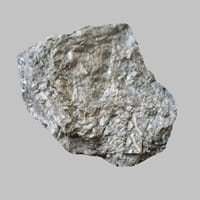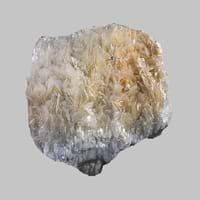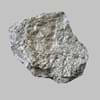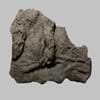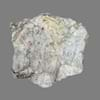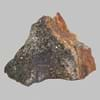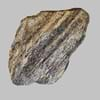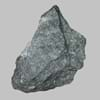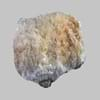Whiteschist and Talc carbonate
Definition
Definition
Whiteschist is an uncommon rock type belonging to a class of metamorphic rock, this is formed at high-ultra-high pressures
Talc carbonate is nothing but a rock sequence or a mineral composition found in metamorphic ultramafic rocks.
History
Origin
Tasmania
China, USA, Middle east
Discoverer
Unknown
Unknown
Etymology
From French schiste, Greek skhistos i.e. split
From medieval Latin, talcum
Class
Metamorphic Rocks
Metamorphic Rocks
Sub-Class
Durable Rock, Soft Rock
Durable Rock, Soft Rock
Family
Group
Not Applicable
Not Applicable
Other Categories
Fine Grained Rock, Medium Grained Rock, Opaque Rock
Fine Grained Rock, Opaque Rock
Texture
Texture
Foliated
Very Soft
Color
Colourless, Green, Grey, White
Colourless, Grey, White
Maintenance
Less
Less
Durability
Durable
Durable
Water Resistant
No
Yes
Scratch Resistant
Yes
Yes
Stain Resistant
Yes
No
Wind Resistant
No
No
Acid Resistant
No
No
Appearance
Banded and Foilated
Soft
Uses
Architecture
Interior Uses
Decorative Aggregates, Interior Decoration
Decorative Aggregates, Interior Decoration
Exterior Uses
Garden Decoration, Paving Stone
Garden Decoration
Other Architectural Uses
Curbing
Powder
Industry
Construction Industry
for Road Aggregate
Source of calcium
Medical Industry
Not Yet Used
Taken as a Supplement for Calcium or Magnesium
Antiquity Uses
Artifacts, Monuments, Sculpture, Small Figurines
Artifacts, Jewellery, Monuments, Sculpture, Small Figurines
Other Uses
Commercial Uses
Creating Artwork, Gemstone, Jewelry, Production of Lime
Manufacturing of baby powder
Types
Types
Not Available
Not Available
Features
High percentage of mica, Host Rock for Lead
Easily splits into thin plates, Generally rough to touch, Host Rock for Lead
Archaeological Significance
Monuments
Used
Used
Famous Monuments
Data Not Available
Data Not Available
Sculpture
Used
Used
Famous Sculptures
Data Not Available
Data Not Available
Pictographs
Used
Used
Petroglyphs
Used
Not Used
Figurines
Used
Used
Fossils
Absent
Absent
Formation
Formation
Whiteschist is formed by dynamic metamorphism at high temperatures and pressures that aligns the grains of mica, hornblende and other elongated minerals into thin layers.
Due to change in environmental conditions, rocks are heated and pressurized deep inside the Earth's surface. Talc Carbonate is formed from the extreme heat caused by magma or by the intense collisions and friction of tectonic plates.
Composition
Mineral Content
Carbonate, Coesite, Quartz, Silica
Carbonate, Chlorite, Magnesium
Compound Content
CaO, Mg, MgO, Silicon Dioxide
CaO, Carbon Dioxide, MgO
Transformation
Metamorphism
No
Yes
Types of Metamorphism
Not Applicable
Burial Metamorphism, Cataclastic Metamorphism, Contact Metamorphism, Hydrothermal Metamorphism, Impact Metamorphism
Weathering
Yes
No
Types of Weathering
Biological Weathering, Chemical Weathering, Mechanical Weathering
Not Applicable
Erosion
Yes
No
Types of Erosion
Chemical Erosion, Coastal Erosion, Glacier Erosion
Not Applicable
Properties
Physical Properties
Hardness
1.5
1-2
Grain Size
Fine to Medium Grained
Fine Grained
Fracture
Conchoidal
Flat
Streak
White
White
Porosity
Less Porous
Less Porous
Luster
Subvitreous to Dull
Pearly
Compressive Strength
200.00 N/mm2
10
250.00 N/mm2
4
Cleavage
Perfect
Perfect
Toughness
1
1
Specific Gravity
2.86
2.86
Transparency
Opaque
Translucent
Density
2.8-2.9 g/cm3
2.8-2.9 g/cm3
Thermal Properties
Specific Heat Capacity
0.92 kJ/Kg K
10
0.92 kJ/Kg K
10
Resistance
Heat Resistant
Heat Resistant, Wear Resistant
Reserves
Deposits in Eastern Continents
Asia
Afghanistan, Bangladesh, Bhutan, China, India, Japan, Kazakhstan, Malaysia, Pakistan, Russia, Thailand, Turkey, Vietnam
Not Yet Found
Africa
Egypt, Ethiopia, Morocco, Nigeria, South Africa
Ethiopia, Ghana, Western Africa
Europe
Austria, England, France, Georgia, Germany, Italy, Liechtenstein, Monaco, Norway, Slovenia, Spain, Sweden, Switzerland
England
Others
Not Yet Found
Not Yet Found
Deposits in Western Continents
North America
Canada, Costa Rica, Cuba, Mexico, Panama, USA
Canada, USA
South America
Brazil, Colombia, Guyana
Argentina, Bolivia, Uruguay
Deposits in Oceania Continent
Australia
New South Wales, New Zealand, Queensland
Central Australia, South Australia, Western Australia
All about Whiteschist and Talc carbonate Properties
Know all about Whiteschist and Talc carbonate properties here. All properties of rocks are important as they define the type of rock and its application. Whiteschist and Talc carbonate belong to Metamorphic Rocks.Texture of Whiteschist is Foliated whereas that of Talc carbonate is Very Soft. Whiteschist appears Banded and Foilated and Talc carbonate appears Soft. The luster of Whiteschist is subvitreous to dull while that of Talc carbonate is pearly. Whiteschist and Talc carbonate are available in colourless, green, grey, white colors. The commercial uses of Whiteschist are creating artwork, gemstone, jewelry, production of lime and that of Talc carbonate are manufacturing of baby powder.
